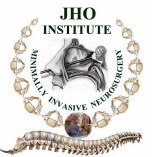Jho Institute for Minimally Invasive Neurosurgery Department of Neuroendoscopy
Spine Diseases
Brain Diseases
Hyperhidrosis, Hyperhidrosis Surgery, Sweating Treatment: Dr. Jho's Endoscopic Thoracic Sympathectomy
Endoscopic T2 an T3 Sympathectomy
Professor & Chair, Department of Neuroendoscopy
Jho Institute for Minimally Invasive Neurosurgery
Dr. Jho's endoscopic T2 and T3 sympathectomy
A small skin incision is made near the armpit area (axilla). One or two 5-mm trocars are placed into the chest cavity. Through these trocars, the T2 and T3 sympathetic ganglions are excised under direct endoscopic visualization. The use of a chest drain is not necessary postoperatively. Postoperative discomfort is minimal.
Overview
Hyperhidrosis palmaris et facialis is in a western society a relatively uncommon condition that consists of excessive sweating in the hands, face, armpits, and feet. However, it is a common codition for east-asian ethnic groups. Excessive sweating can occur in particular parts of the body or throughout the entire body. The most common symptoms are excessive cold sweating, difficulty in wearing make-up, difficulty in the use of the hands (especially during typing or writing), and difficulty in socializing due to these symptoms. Particularly, young adults with this disorder often encounter frustrations in their social life.
Treatments consist of medical treatment with sympathetic blocking agents or surgical treatment. Surgical treatment consists of thoracic sympathectomy. Sweating is controlled by the sympathetic nervous system. Overactivity of the sympathetic nervous system produces excessive sweating and coldness of the hands from the shrinkage of blood vessels. The control center for excessive sweating of the face, hands and armpits is the second (T2) and third thoracic (T3) sympathetic ganglion. Therefore, surgical treatment focuses on removal of the T2 and T3 sympathetic ganglion.
Although it can be performed via various techniques, an endoscopic transthoracic technique is one of the best surgical techniques. The endoscopic transthoracic technique utilizes a 4-mm endoscope via a small skin incision near an armpit while the patient is under general anesthesia. Surgical risk is minimal and often only requires an overnight hospital stay. Although it can be performed as a outpatient basis, overnight observation has been adopted with one night hospital stay. The operation itself takes 10 to 20 minutes for one side. Once one side surgery is finished, the other side surgery will be proceeded. The procedure is generally designed to effectively reduce symptoms in the face, hands, and the body above the nipple line. Patients may experience compensatory excessive sweating below the upper chest postoperatively. However, approximately 40% of patients may experience the effective reduction of sweating in their feet as well.
Note that endoscopic transthoracic sympathetomy can also be performed for disease conditions such as reflex sympathetic dystrophy, causalgia, Raynaud syndrome, etc.
Practice Manager: Robin A. Coret
Tel : (412) 359-6110
Fax : (412) 359-8339
Address : JHO Institute for Minimally Invasive Neurosurgery
Department of Neuroendoscopy
Sixth Floor, South Tower
Allegheny General Hospital
320 East North Avenue
Pittsburgh, PA 15212-4772
Copyright 2002-2032
